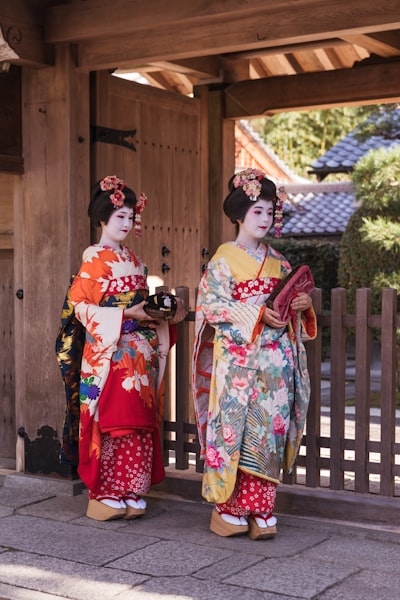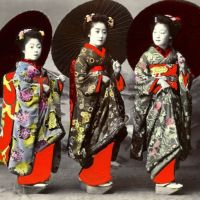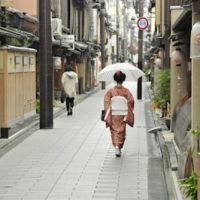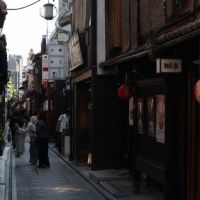Daily Life of a Maiko: a blend of tradition, discipline, and artistry
S-fleage
S-fleage is a Kyoto-based company. We are proud to introduce the charms of Kyoto to the world. We hope this article will help you to experience Kyoto.
Latest posts by S-fleage (see all)
The daily life of a Maiko, an apprentice Geisha, is a fascinating blend of tradition, discipline, and artistry.
From the early morning hours to late at night, Maiko dedicates themselves to honing their skills and preserving Japan’s rich cultural heritage.
Their daily routine is a testament to their commitment to the art and traditions they embody.
Contents
History of Maiko

Maiko, or apprentice geisha, have been an iconic part of Kyoto’s cultural landscape for centuries.
Their origins can be traced back to the Edo period (1603-1868) when young girls began serving tea to travelers around Yasaka Shrine.
Initially, mizuchaya (tea houses) served only tea and dango (rice dumplings), but eventually, they began offering sake and food as well.
The young women working there started to perform shamisen music and dances, imitating Kabuki theater.
Today, maiko continue to train rigorously in traditional arts such as dance, music, and tea ceremony, preserving centuries-old customs while adapting to modern times.
Morning Routine

A Maiko’s morning routine emphasizes the importance of waking up early to prepare for the day’s activities.
At the start of a busy day, they follow a disciplined routine to ensure everything is in order.
Early Rising
A Maiko’s day begins early in the morning.
She usually wakes up around 8 a.m. and starts preparing herself for the day.
After waking up, she sets her hair, applies makeup, and dresses in her kimono to get ready for the day.
Morning Preparations
Morning preparations require meticulous attention to her appearance, as she must present herself with grace and dignity.
This includes styling her hair in the traditional Japanese manner, applying white makeup with red and black accents, and dressing in a beautifully crafted kimono.
Each element of the Maiko’s appearance is carefully chosen to reflect the season and the occasion.
Breakfast
The Maiko and the members of the okiya gather for breakfast.
During this time, they also review the schedule for the day.
A nutritious breakfast is essential to prepare for a busy day ahead.
The meal often consists of rice, miso soup, grilled fish, and seasonal vegetables, though sometimes sandwiches are also prepared.
Breakfast is an important time for the Maiko to gather with her fellow apprentices and the “mother” of the okiya to confirm the plans for the day.
Training and Practice

After breakfast, they start training.
At the Kaburenjo in each hanamachi, Maiko and Geiko thoroughly learn dance, shamisen, singing, and other traditional arts.
The Kaburenjo is a practice hall where Maiko and Geiko hone their artistic skills.
It also serves as a venue for performances and is located in Kyoto’s hanamachi districts. The instructors who teach at the Kaburenjo are referred to as Oshishou-san (masters).
These masters are often experts in traditional performing arts, such as the heads of various traditional arts schools, and they provide rigorous training to the Maiko and Geiko.
Training and practice are at the heart of a Maiko’s daily life.
Dance Practice
Dance practice is a central aspect of a Maiko’s training, requiring dedication and precision.
Maiko learn and rehearse traditional Japanese dances that tell stories through elegant movements and gestures.
Dance lessons help Maiko develop grace, poise, and the ability to convey emotion through their performances.
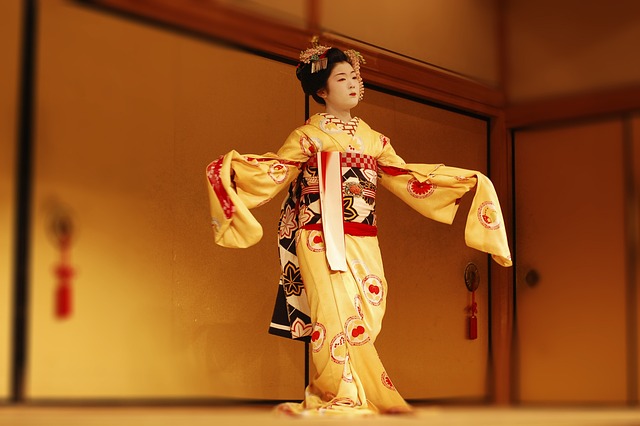
Music Practice
Music practice is another essential component of a Maiko’s training.
Maiko learn to play traditional instruments, such as the shamisen, and practice singing classic Japanese songs.
These skills are vital for their performances and entertainment duties, as music and dance often accompany one another.
Tea Ceremony
The tea ceremony is a refined art form that requires patience and attention to detail.
Maiko practice the precise movements and etiquette of preparing and serving tea.
This ritual is not only a performance but also a means of fostering a deep connection with guests, reflecting the Maiko’s dedication to hospitality and tradition.
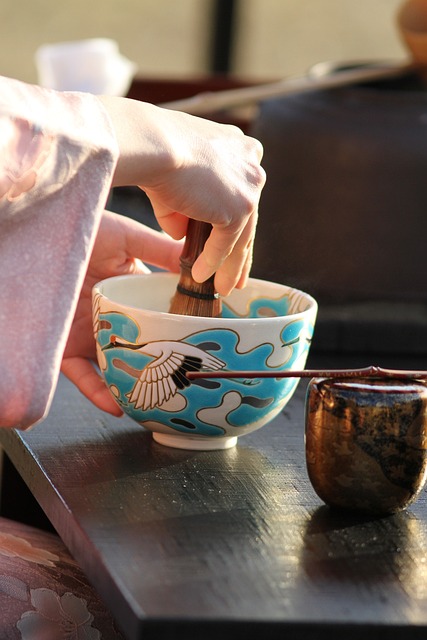
Etiquette Lessons
Etiquette lessons are crucial for Maiko, as they must interact with guests and clients with impeccable manners.
These lessons cover everything from polite conversation and graceful movement to the art of bowing.
Mastering etiquette is essential for creating a welcoming and respectful atmosphere during engagements.
Daily Chores and Tasks
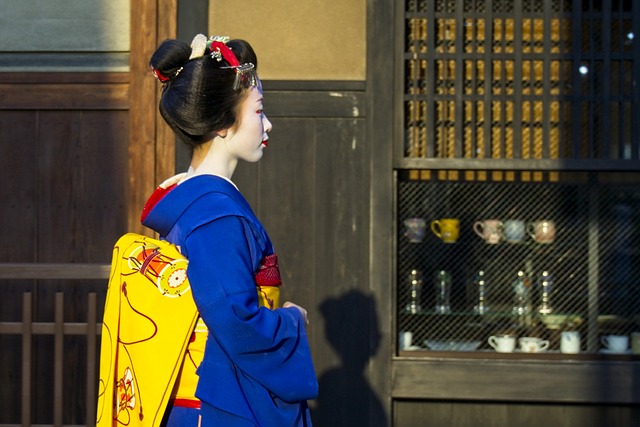
Daily chores and tasks are essential responsibilities within the Okiya.
Household chores, such as cleaning, instill discipline and a sense of duty.
Kimono maintenance requires careful handling to preserve the beauty of their attire.
Community involvement connects Maiko with local residents and visitors, highlighting their role as cultural ambassadors.
Household Chores
In addition to their artistic training, Maiko are responsible for daily household chores within the Okiya.
These tasks include cleaning, laundry, and assisting with meal preparation.
(When guests see a Maiko’s hands, any rough skin or hangnails can give a domestic appearance, so there are times when she avoids doing tasks that involve water.)
Performing chores instills a sense of discipline and responsibility, emphasizing the importance of contributing to the household.
Kimono Maintenance
Maintaining the Maiko’s elaborate wardrobe is a significant task.
Kimono and accessories must be carefully cleaned, stored, and prepared for each performance.
This responsibility teaches Maiko the value of care and precision, as well as an appreciation for the beauty and craftsmanship of their attire.
Community Involvement
Maiko are often involved in community activities and events, representing the cultural heritage of their district.
This involvement fosters a strong connection with the local community and provides opportunities to engage with residents and visitors alike.
Participating in community events highlights the Maiko’s role as cultural ambassadors.
Afternoon Activities
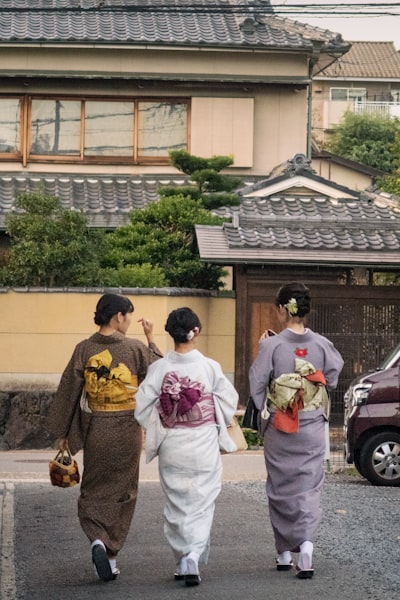
From after lunch until around 3 p.m., when preparations for the evening’s banquets begin, Maiko have relatively free time.
They might use this time for self-practice of their art at the okiya, continue morning rehearsals, or take breaks and visit other establishments.
During these visits, they mainly go to see their senior Geiko or Maiko, known as oneesan, and other tea houses.
Public Appearances
In the afternoon, in addition to making visits, a Maiko often makes public appearances.
She walks through the district streets, wearing a beautiful kimono and interacting with the public.
These appearances offer a glimpse into traditional Japanese culture and grace, making the sight of a Maiko a cherished experience for many.
A Maiko is a symbol of the beauty and elegance of Kyoto.
Meeting with Clients
A Maiko may also meet with clients to discuss upcoming events and performances.
These meetings are conducted with the utmost professionalism and respect, highlighting the Maiko’s commitment to providing excellent service and entertainment.
Building strong relationships with clients is essential for success as a Geiko.
Cultural Engagements
Cultural engagements may include visits to local shrines and temples, attending traditional festivals, and participating in seasonal celebrations.
These activities enrich the Maiko’s understanding of Japanese culture and history, allowing them to incorporate these elements into their performances and interactions.
Evening Performances
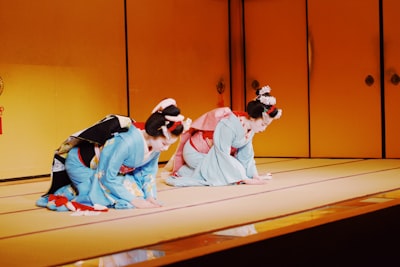
Finally, night falls, and it’s time for the banquets.
A Maiko’s job involves performing dances and serving drinks to guests, but she doesn’t visit just one tea house per night.
On busy days, she might go back and forth between up to five different tea houses.
Usually, her work ends around 1 a.m., and she doesn’t get to sleep until around 2 a.m., making it a very demanding job.
Preparation
Preparation for the evening’s work begins in earnest.
While it might take over an hour to apply makeup when she first starts, as she gains experience, she can finish in about 40 minutes.
After the makeup is done, the kimono is put on.
A Maiko’s kimono has a long obi (sash) that is difficult for her to tie on her own, so a professional dresser, known as otoko-shu, helps with the dressing.
Once the kimono is on, she’s ready.
The Maiko’s hairstyle is made from her natural hair, so it needs to be redone at a specialized salon once a week.
Performance Venues
Performances aren’t limited to tea houses in Gion.
Maiko also travel to hotel parties, local product exhibitions, and other events.
Each setting offers a unique atmosphere, allowing the Maiko to showcase her skills with grace and charm, delighting guests.
The venue plays an important role in enhancing the audience’s experience and highlighting the Maiko’s artistry.
Interaction with Guests
Interacting with guests is a key aspect of the evening performance.
A Maiko engages in conversation, serves tea, and entertains with music and dance.
She communicates with guests while serving drinks, making every effort to ensure they have an enjoyable time.
She also performs dances and plays games to enliven the atmosphere.
Each banquet typically lasts about two hours.
These interactions emphasize the Maiko’s role as both a hostess and a cultural ambassador, giving guests a glimpse into the refined world of traditional Japanese performing arts.
Late Evening Routine
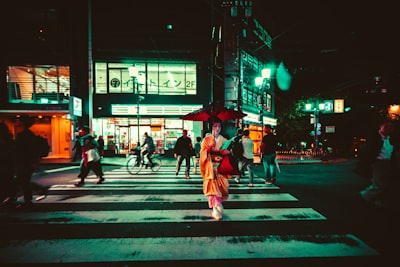
The late-night routine begins after returning to the okiya and provides a sense of stability after a long day.
This routine is crucial for preparing for the next day’s practice.
Return to Okiya
After finishing all the banquets, the Maiko usually returns to the okiya around 1 a.m.
It’s not uncommon for her to go to bed around 2 a.m. after removing her makeup and changing clothes.
The heavy makeup, including white face powder and dark red lipstick, is removed at this late hour, which can damage the skin, so Maiko put a lot of effort into skincare.
Dinner
Although Maiko work at tea houses, they don’t have dinner there.
Instead, they have a late-night dinner after returning to the okiya.
Dinner is a time for the Maiko to replenish her energy and enjoy a meal with her fellow Maiko and okaa-san (the head of the okiya).
This meal provides an opportunity to share experiences, discuss the evening’s performances, and strengthen the bonds within the okiya.
Dinner offers both nutrition and camaraderie, which are essential for a fulfilling life as a Maiko.
Reflection and Preparation for the Next Day
Reflection is an important aspect of a Maiko’s daily routine, allowing them to consider their achievements and areas for improvement.
This reflection is followed by preparation for the next day’s activities, ensuring that all tasks are organized and planned.
This dedication to continuous improvement and readiness is a hallmark of the Maiko’s disciplined lifestyle.
Tradition and Dedication: The Essence of a Maiko’s Daily Life

The daily life of a Maiko is a harmonious blend of tradition, discipline, and artistry.
Through rigorous training, cultural engagement, and dedication to their craft, Maiko embody the essence of Japan’s rich cultural heritage.
Their commitment to preserving traditional arts and providing exceptional entertainment is a testament to the enduring beauty and significance of the Maiko tradition.
The journey of a Maiko is one of lifelong learning and devotion, offering a glimpse into a world where elegance and tradition are cherished and celebrated.

